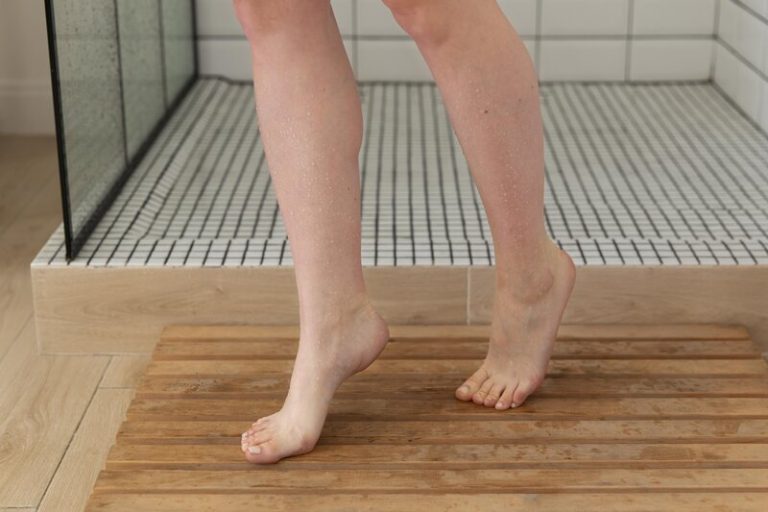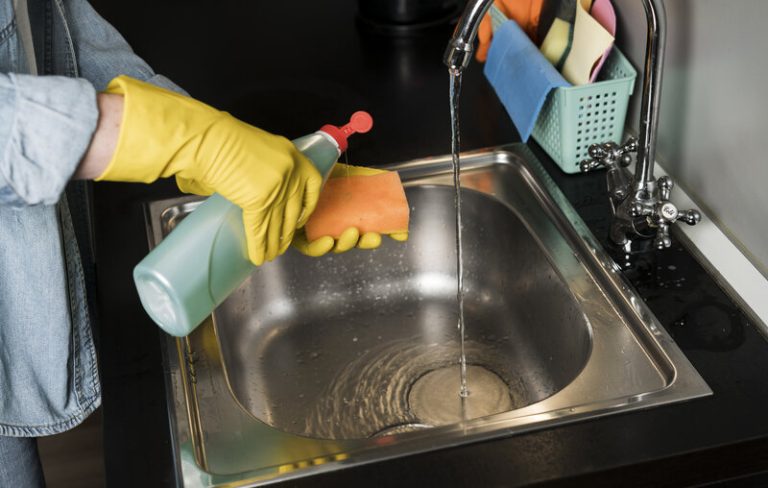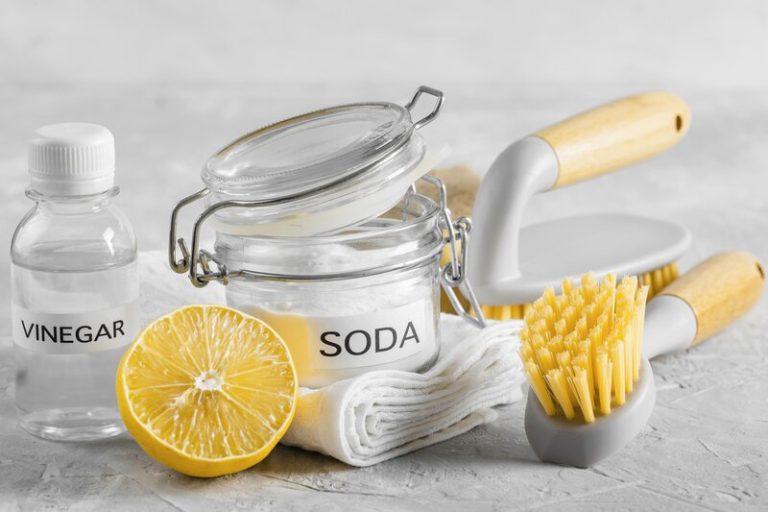Are you tired of feeling overwhelmed by the constant mess in your home? A weekly cleaning checklist might be just what you need to keep your space clean and organized.
We will explore the importance of a weekly cleaning checklist, its benefits, and what tasks should be included in it.
We will also provide tips on how to create an effective checklist and how often you should update it.
Say goodbye to stress and hello to a clean and tidy home with the help of a weekly cleaning checklist!
What Should Be Included in a Weekly Cleaning Checklist?
A comprehensive weekly cleaning checklist should include tasks that cover all areas of the house, ensuring that you systematically organise and clean each room and common area.
Starting in the kitchen, cleaning the worktops, scrubbing the sink, and wiping down appliances are crucial tasks.
Moving to the living room, vacuuming the floors and dusting surfaces are essential.
Don’t forget the bedroom – changing the bed linen, dusting furniture, and decluttering are key.
In the bathroom, sanitising surfaces, cleaning the toilet, and scrubbing the shower make a big difference.
Also, include tasks like mopping floors, emptying rubbish bins, and organising wardrobes in your checklist.
a. Kitchen Cleaning Tasks
Kitchen cleaning tasks in a weekly checklist should include sanitising counters, wiping down appliances, cleaning the fridge, and scrubbing the hob to maintain a clean and hygienic space.
Regarding ensuring a spotless kitchen, it’s crucial to pay attention to every detail.
Scrubbing the hob with a mixture of baking soda and vinegar helps remove stubborn grease stains. Disinfecting the worktops with a commercial kitchen sanitiser ensures a bacteria-free environment.
Don’t forget to pull out all the items from the fridge and give it a thorough, deep clean; this includes checking for expired food items and wiping down shelves. Organising the fridge contents neatly not only improves efficiency but also enhances the overall aesthetic of the space.
b. Bathroom Cleaning Tasks
Bathroom cleaning tasks in a weekly checklist should involve disinfecting the toilet, scrubbing the basin, cleaning mirrors, and wiping down surfaces to ensure a sanitary environment.
It is essential to pay attention to disinfecting commonly used surfaces in the bathroom to prevent the spread of germs and bacteria. This includes cleaning and disinfecting the door handles, light switches, tap handles, and any other high-touch areas. Regularly washing shower curtains, bath mats, and towels can help in maintaining hygiene. Keeping cleaning supplies like disinfectant sprays, wipes, and scrubbing brushes easily accessible can encourage frequent cleaning and make it a more manageable task.
c. Living Room Cleaning Tasks
Weekly cleaning tasks for the living room should include hoovering the floors, dusting furniture, and cleaning windows to keep the space tidy and welcoming.
Along with these regular chores, another important aspect of maintaining a well-kept living room is to declutter surfaces and organise items such as books, magazines, and electronics.
This ensures that the room appears neat and orderly, creating a sense of harmony and tranquillity.
It’s essential to pay attention to upholstery and soft furnishings, such as sofas and curtains, by regularly hoovering or using a lint roller to remove any dust or pet hair.
Don’t forget to also clean any decorative items like picture frames, vases, or lamps to prevent them from accumulating dirt and losing their shine.
By following these cleaning routines consistently, you can enjoy a cosy, inviting living space where you can relax and entertain guests with pride.
d. Bedroom Cleaning Tasks
In the bedroom, weekly cleaning tasks should cover changing bed linen, making the bed, hoovering the floors, and organising personal items to create a restful environment.
Ensuring that the bed linen is washed and replaced regularly not only maintains hygiene but also adds a fresh feel to the room.
Making the bed each morning promotes a sense of order and tidiness.
Hoovering the floors removes dust and allergens, contributing to a clean and healthy atmosphere.
Organising personal items, such as clothing and accessories, minimises clutter and enhances the overall appearance of the bedroom.
e. Other Common Areas Cleaning Tasks
Cleaning tasks for other common areas in your home should include dusting surfaces, mopping floors, and maintaining furniture, as well as ensuring the HVAC system is free of dust and debris.
Along with the mentioned tasks, it is crucial to pay special attention to high-touch areas in the hallways and entryways, such as door handles, light switches, and stair railings, which can harbour germs and bacteria.
Regular vacuuming or sweeping of these areas not only enhances the aesthetics but also minimizes the accumulation of dirt and allergens, contributing to a healthier living environment.
Checking and replacing air filters in the HVAC system is essential to ensure proper air circulation and maintain indoor air quality.
How to Create a Weekly Cleaning Checklist?
Creating a weekly cleaning checklist involves assessing your cleaning needs, determining a schedule, dividing tasks into daily, weekly, and monthly lists, and customising it to fit your home and lifestyle.
Understanding your specific cleaning requirements is essential to ensure that your checklist is tailored to address the unique needs of your living space.
Once you have a clear idea of what needs to be cleaned, strategise and allocate tasks based on your availability throughout the week, setting realistic goals to maintain cleanliness consistently.
By incorporating a system you can streamline your cleaning process and create a structured plan for each day, increasing efficiency and reducing overwhelm.
a. Assess Your Cleaning Needs
The first step to creating an effective weekly cleaning checklist is to assess your specific cleaning needs based on the size and condition of your home and the tasks required for quality assurance.
Consider the number of rooms in your residence and whether you have special areas like a home office or a basement that require unique cleaning attention. Highlight the frequency at which certain tasks need to be performed, such as dusting, vacuuming, or cleaning the bathrooms.
Take into account any specific cleaning challenges you may face, such as pet hair accumulation, mould or mildew growth, or the need for deep cleaning in high-traffic areas.
b. Determine Your Cleaning Schedule
Once you have assessed your cleaning needs, the next step is to determine a cleaning schedule that fits into your routine and helps you stay organised.
Creating a cleaning schedule that is both effective and manageable requires a thoughtful approach. Begin by breaking down your tasks into daily, weekly, and monthly categories. For instance, you can allocate smaller chores like dusting and sweeping for daily maintenance, while saving heavier tasks like deep cleaning the bathroom for the weekend. This way, you prevent overwhelming yourself with a daunting list of chores to complete in one go.
It’s vital to set realistic time frames for each cleaning task to ensure that your schedule is achievable and doesn’t disrupt your daily routine. By incorporating cleaning into your everyday habits, such as wiping down counters after cooking or tidying up before bed, you can maintain a tidy living space without feeling burdened by extensive cleaning sessions.
c. Divide Tasks into Daily, Weekly, and Monthly Lists
Dividing tasks into daily, weekly, and monthly lists is crucial for creating an effective cleaning schedule that ensures all areas of your home are consistently maintained and organized.
By categorizing tasks in this way, you can prioritize what needs attention regularly and what can be tackled less frequently. Daily tasks might include making beds, washing dishes, and wiping down surfaces – these activities help maintain baseline cleanliness.
Weekly tasks, such as vacuuming, mopping floors, and changing bed linens, go a step further in ensuring a deeper level of cleanliness.
Monthly tasks like washing windows, cleaning out the refrigerator, and decluttering cupboards allow for a more thorough and comprehensive cleaning approach.
This balanced approach not only helps in keeping your home tidy on a day-to-day basis but also prevents overwhelming cleaning marathons.
This approach enables you to focus on preventing dirt and grime build-up while ensuring that the less frequent but equally essential tasks are not neglected. Creating a cleaning schedule tailored to your household’s needs can promote a more organized and stress-free living environment, making routine maintenance more manageable. By spreading out cleaning tasks over different frequencies, you can maintain a consistent level of cleanliness throughout your home without feeling overwhelmed or having to spend excessive time cleaning.
d. Customise Your Checklist to Your Home and Lifestyle
Customising your weekly cleaning checklist to fit your specific home and lifestyle ensures that your cleaning routine is both effective and manageable.
When tailoring your checklist, take into account your daily commitments and how much time you can realistically allocate to cleaning tasks.
Consider involving family members in the process, and assigning age-appropriate chores to distribute the workload efficiently.
Factor in the size of your household to determine the frequency of certain tasks like laundry or tidying up common areas.
By personalising your checklist according to these factors, you create a practical and efficient routine that suits your unique circumstances.
Tips for Using a Weekly Cleaning Checklist Effectively
To use a weekly cleaning checklist effectively, it’s essential to follow practical tips such as setting realistic goals, staying consistent, using quality cleaning products, and regularly updating the checklist to reflect your changing needs.
Incorporating organisational strategies into your cleaning routine can significantly enhance efficiency. Arranging your cleaning supplies in a designated storage space makes it easier to access what you need quickly. Consider categorising items by room or task to streamline the process. Consistency is key in maintaining a clean home, so allocate specific days or times for cleaning tasks to create a habit. Invest in durable tools like microfibre cleaning cloths or versatile multipurpose cleaners to tackle various surfaces effectively.
How Often Should You Update Your Weekly Cleaning Checklist?
Updating your weekly cleaning checklist periodically is crucial to ensure it remains relevant and effective, usually every season or whenever there are significant changes in your home or lifestyle.
This practice enables you to adapt your cleaning routine to match the evolving requirements of your living space. By regularly reviewing and updating your checklist, you can address any new cleaning priorities or challenges that may arise. Refreshing your checklist regularly helps you optimise your cleaning process and maximise efficiency.
Staying current with your checklist promotes a sense of accomplishment and satisfaction as you witness the progress made in maintaining a tidy and organised home. It also contributes to a healthier living environment by ensuring that all necessary cleaning tasks are consistently completed.
These are the weekly cleaning checklists, from how to make them, tips on how to use them, to how often you should update them.
For a truly immaculate home without the hassle, entrust your cleaning needs to TEKA Cleaning. Our skilled team ensures every corner of your home is spotless, giving you peace of mind and a healthier living environment.
Don’t let weekly cleaning become a burden! Opt for our professional services and enjoy a sparkling clean home without lifting a finger. Contact us today on 01233 751 544 to book your comprehensive residential cleaning service and experience the convenience and quality of TEKA Cleaning!
Read also:











